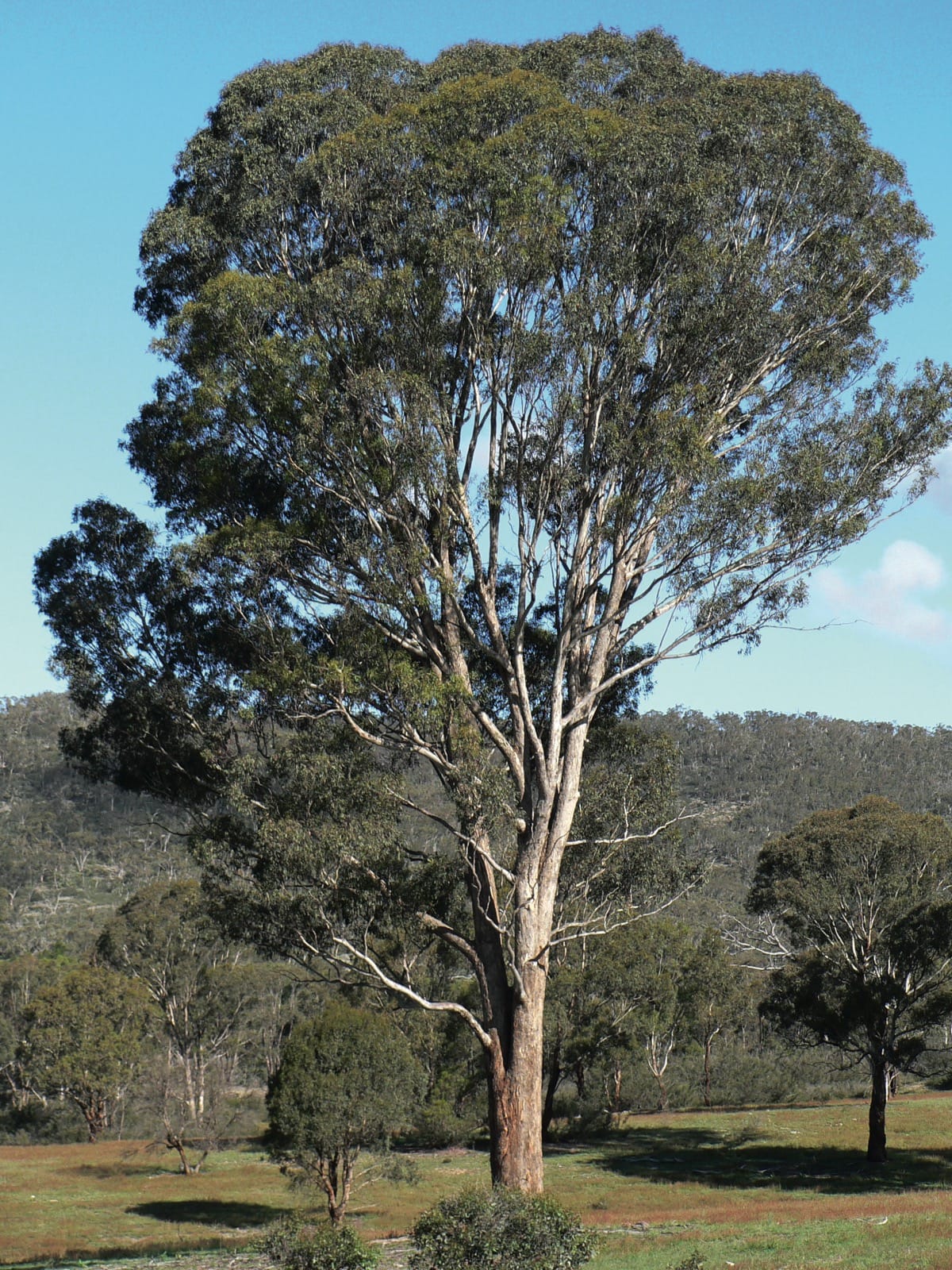Eucalyptus melliodora
Credits
Article from New Trees by John Grimshaw & Ross Bayton
Recommended citation
'Eucalyptus melliodora' from the website Trees and Shrubs Online (treesandshrubsonline.
Genus
Common Names
- Yellow Box
Other taxa in genus
- Eucalyptus acaciiformis
- Eucalyptus albida
- Eucalyptus amygdalina
- Eucalyptus archeri
- Eucalyptus blakelyi
- Eucalyptus bridgesiana
- Eucalyptus brookeriana
- Eucalyptus camaldulensis
- Eucalyptus camphora
- Eucalyptus chapmaniana
- Eucalyptus cinerea
- Eucalyptus coccifera
- Eucalyptus cordata
- Eucalyptus crenulata
- Eucalyptus cypellocarpa
- Eucalyptus dalrympleana
- Eucalyptus delegatensis
- Eucalyptus elliptica
- Eucalyptus fastigata
- Eucalyptus fraxinoides
- Eucalyptus globulus
- Eucalyptus gregsoniana
- Eucalyptus gunnii
- Eucalyptus johnstonii
- Eucalyptus kybeanensis
- Eucalyptus lacrimans
- Eucalyptus laophila
- Eucalyptus leucoxylon
- Eucalyptus macarthurii
- Eucalyptus macrorhyncha
- Eucalyptus mannifera
- Eucalyptus mitchelliana
- Eucalyptus moorei
- Eucalyptus morrisbyi
- Eucalyptus neglecta
- Eucalyptus nicholii
- Eucalyptus nitens
- Eucalyptus nova-anglica
- Eucalyptus obliqua
- Eucalyptus oreades
- Eucalyptus ovata
- Eucalyptus parvula
- Eucalyptus pauciflora
- Eucalyptus praecox
- Eucalyptus radiata
- Eucalyptus regnans
- Eucalyptus remota
- Eucalyptus risdonii
- Eucalyptus rodwayi
- Eucalyptus rubida
- Eucalyptus saligna
- Eucalyptus sideroxylon
- Eucalyptus stellulata
- Eucalyptus subcrenulata
- Eucalyptus tenuiramis
- Eucalyptus urnigera
- Eucalyptus viminalis
Tree to 30 m. Bark grey, yellow or reddish brown, fibrous and/or flaky on the lower trunk and larger branches; smooth and yellowish white above. Branchlets reddish brown or orange. Juvenile leaves alternate, petiolate, ovate or elliptic, greyish green. Adult leaves green or greyish green, 6.5–14 × 0.8–1.8 cm, lanceolate, falcate, lateral veins distinct, margins entire, apex acuminate or acute; petiole terete or slightly flattened, 1–1.5 cm long. Inflorescences solitary and axillary; umbellasters with seven flowers. Flower buds spindle- or club-shaped; hypanthium 0.3–0.4 cm wide; stamens white or cream. Capsule hemispherical, ovoid or subglobular, 0.4–0.7 cm diameter; valves five, flush or included. Chippendale 1988. Distribution AUSTRALIA: New South Wales (east), Queensland (southeast), Victoria. Habitat Variable; low hills and dry areas, flats near watercourses and open forest. USDA Hardiness Zone 8. Conservation status Not evaluated. Illustration NT348.
There are conflicting reports on the hardiness of Eucalyptus melliodora. Ian Barclay, from near Olympia, Washington in the United States, regards it as tender, and finds that his plants are cut to the ground each winter (Hardy Eucalyptus Page 2004). In contrast, Tom Hart Dyke’s trees at Lullingstone Castle were only ‘cut in half’ by the November 2005 frosts and have regrown rapidly since (pers. comm. 2007), and John Purse’s trees in north Kent were not affected and seem to be reasonably hardy, though slow-growing (J. Purse, pers. comm. 2007). It needs maximum light and does not tolerate shade. In the San Francisco Bay Area it is commonly used as a street tree, and Sean Hogan (pers. comm. 2007) reports that it suffered only minor damage in a –10 ºC frost at Berkeley. In Australia this is the most important species of eucalypt for honey production, and it is noted for its very fragrant flowers. As an ornamental its principal feature is its patchwork bark in different colours, which sometimes peels and falls in circular rings.

